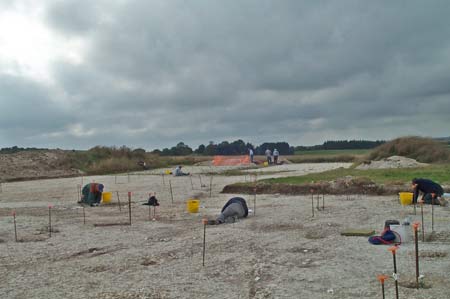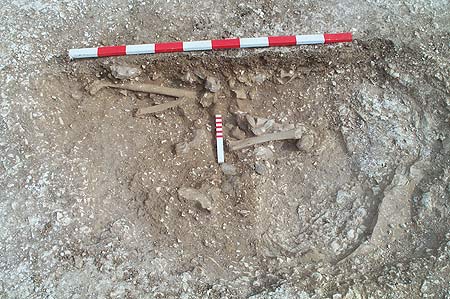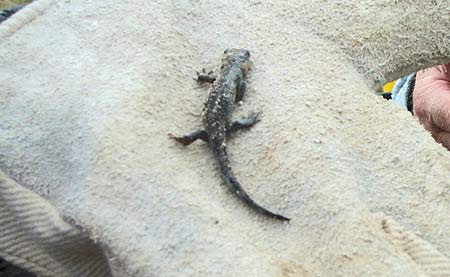When we arrived at Down Farm this morning, we thought the weather men had got it wrong. It was overcast and drizzly when it was meant to be a lovely sunny day. However, by the time we all got on to site, the clouds had abated and the sun slowly made an appearance. This helped morale immensely until the wind started to get up and by the end of the day we were all rather windswept and interesting (or rather had rather red faces and haystack hair). Excavating almost on the top of the hill means that we are always quite exposed and I think most of the team were wondering why Late Bronze Age/ Early Iron Age people had decided to settle here and build roundhouses. Perhaps they enjoyed being buffeted by the wind, although I am sure the advantage of wonderful views and being able to see everything going on in the surrounding landscape may have outweighed the negative factor of always being bright red and sporting straw-like hairdos!!

Work continued on the excavation of quarry hollows, ditches, pits and postholes. Alex finished excavating the northern terminus of the enclosure ditch, but sadly found no evidence of placed deposits or other potentially interesting finds, although he did recover a nice flint flake. More pottery and burnt and struck flint came out of the quarry hollows. Two postholes were excavated which had been cut into the quarry hollows. This means that the quarry hollows were earlier than the roundhouses and it may be that they were extracting chalk marl from them to use for building the houses, rather like daub or marl plaster.
The rectangular feature we started excavating yesterday turned out to be another quarry hollow rather than a grave. This also contained a few finds including a sherd of pottery of Late Bronze Age/ Early Iron Age date. Work continued on the finds-rich pit in the roundhouse which is full of pottery, animal bone and struck and burnt flint, and may relate to a feast which took place within the house itself.

The two large post-pits that may be a porch structure into the roundhouse were fully excavated and one of the most interesting finds came from the base of the western post at the end of the day. As Sadie cleaned up the base of this large hole, she unearthed a yellow-bellied newt, who didn’t seem too pleased to be disturbed as he was clearly in the process of hibernating! We showed this rare animal to Martin Green who suggested we re-home him by his pond where he is far less likely to be rudely disturbed again!
